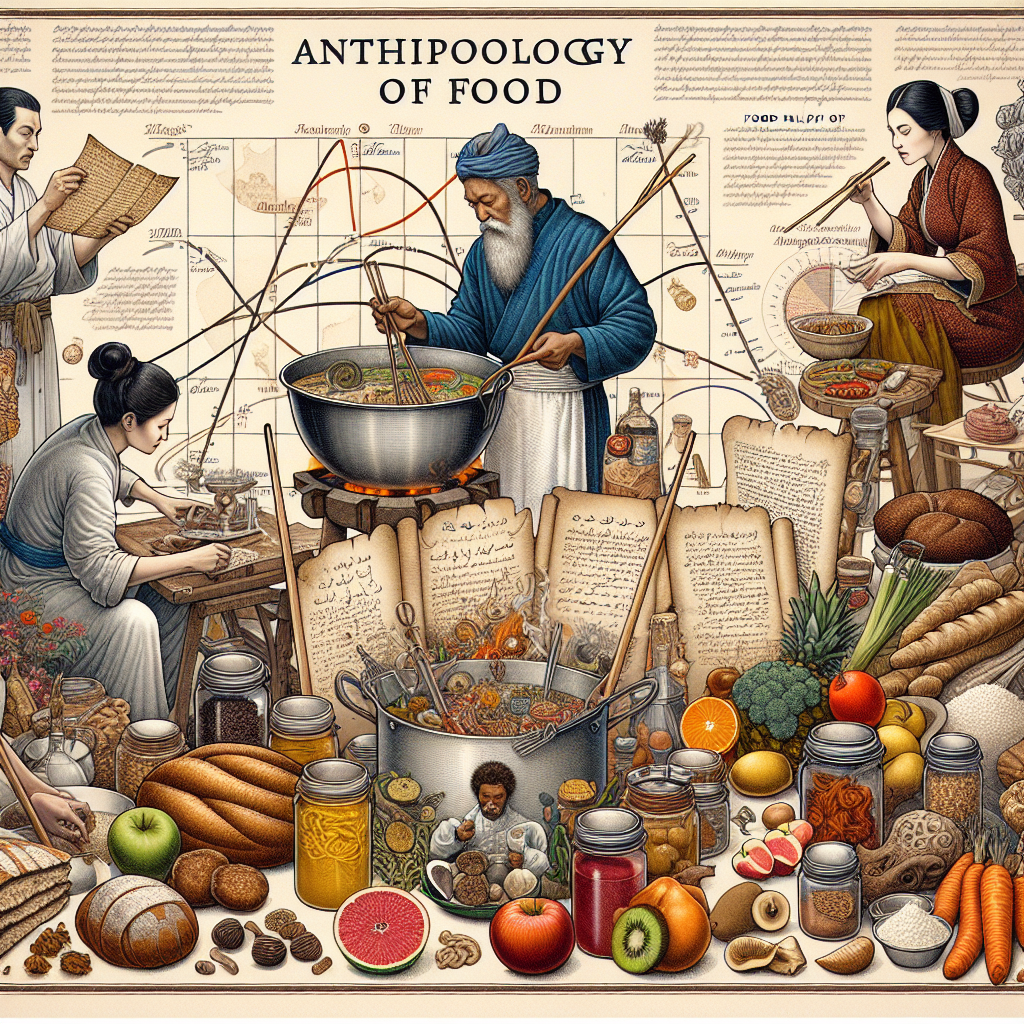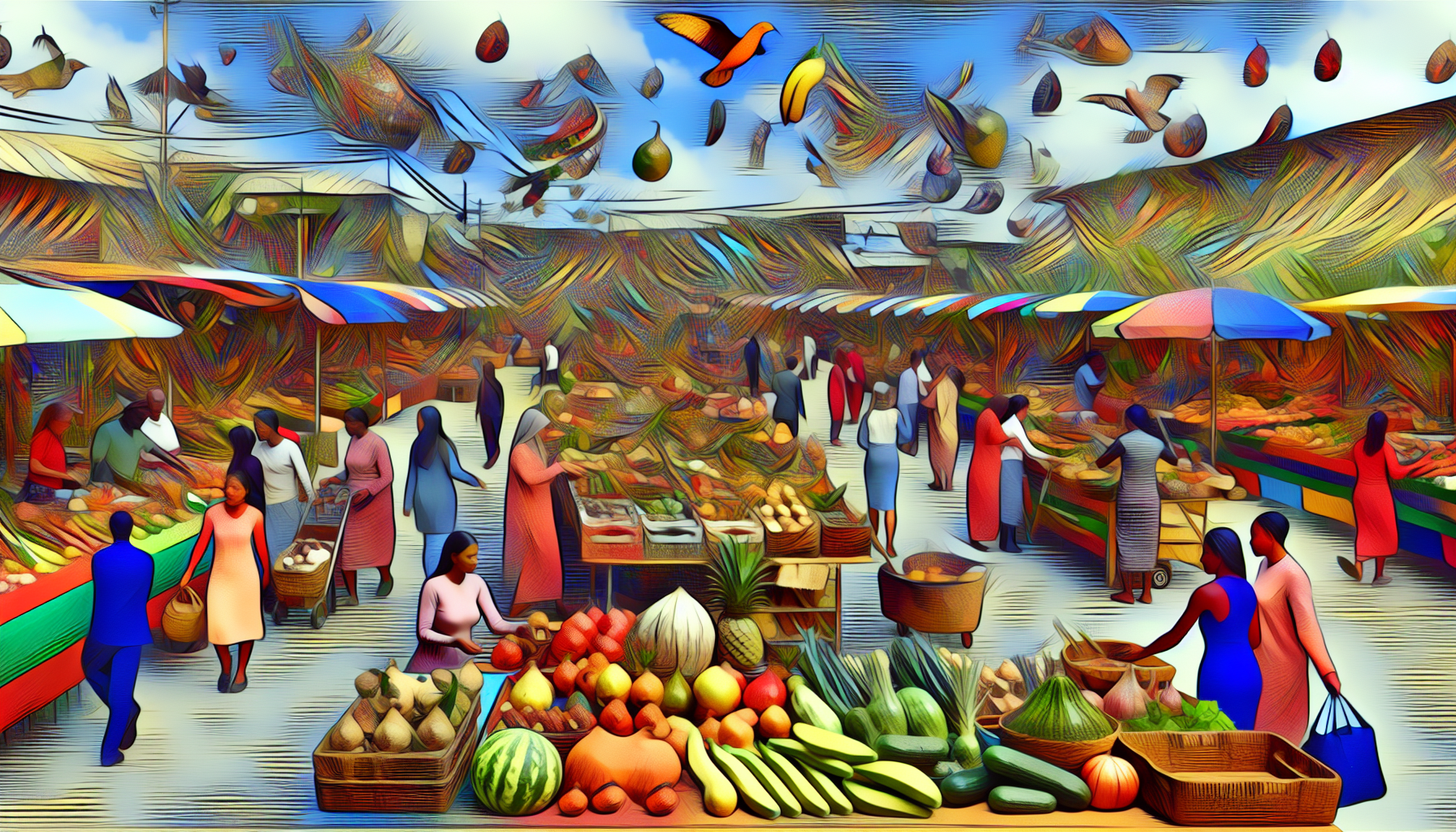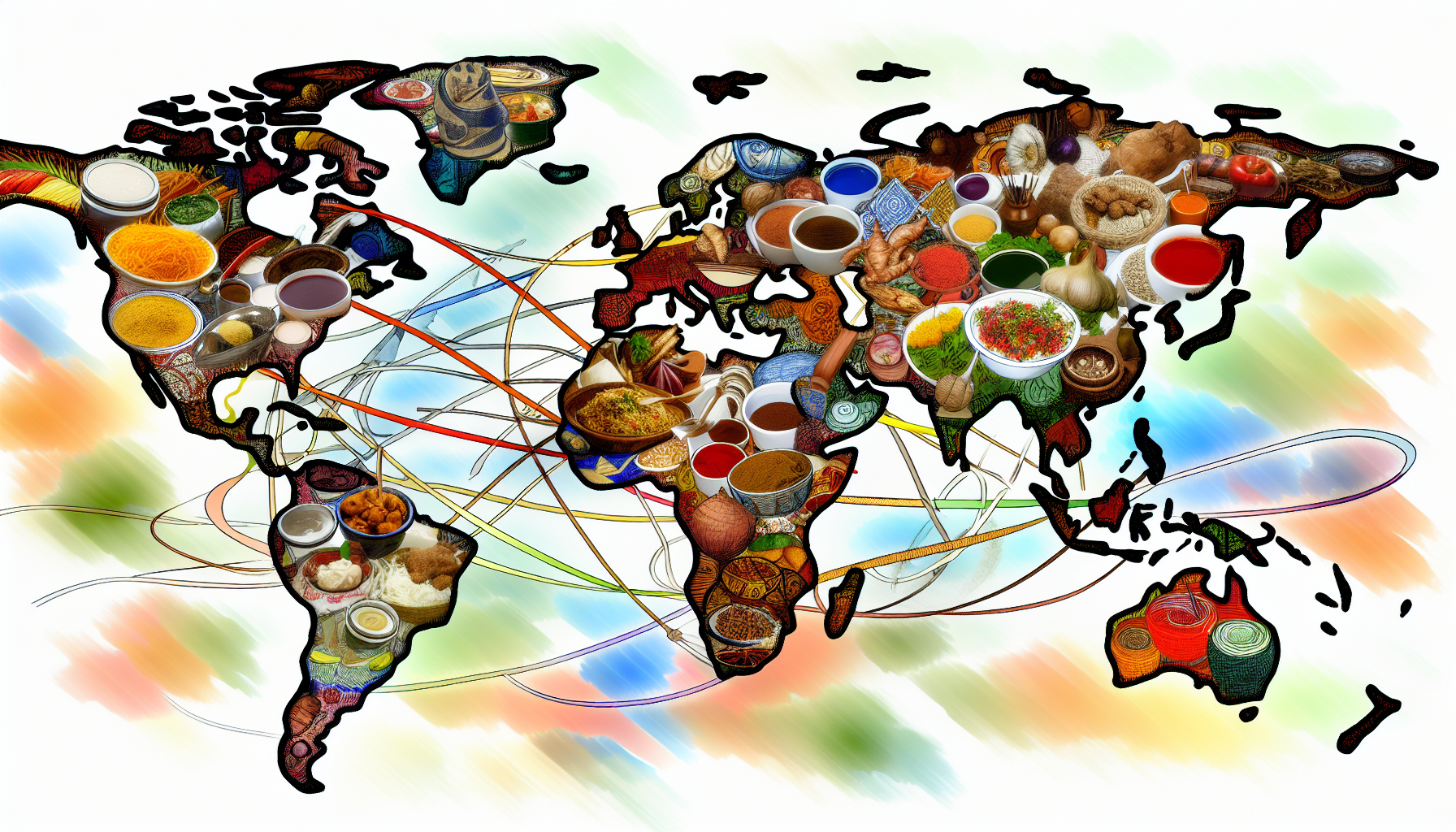Explore the fascinating world of food anthropology. Discover how different cuisines tell the story of diverse cultures and rich histories.

Food is far more than mere sustenance; it is a window into the soul of a society. Across continents and through centuries, every bite tells a story—stories of migration, innovation, trade, conflict, and celebration.
Every society has its unique culinary signature shaped by geography, climate, religion, and historical events. The ingredients available, the methods of preparation, and even the ways food is served and shared are all steeped in tradition. When we study the Anthropology of food Journal, we uncover layers of meaning behind everyday meals. Food not only satisfies hunger but also cements social bonds, commemorates rites of passage, and defines communal identity.
Historically, cuisine has served as an archive of human experience. For example, the spice trade during the medieval period did more than enrich palates; it catalyzed cultural exchanges between Asia, Africa, and Europe. Similarly, the Columbian Exchange—the transfer of plants, animals, and ideas between the Old and New Worlds—reshaped diets and economies globally. Today, these legacies are still evident in the spices in your curry or the maize in your tortilla, symbolizing the enduring connections between food and history.
Understanding how food reflects cultural identity requires us to look at the ingredients, techniques, and rituals that define regional cuisines. Scholars in The Anthropology of food and eating have long argued that food practices serve as a living record of a people’s experiences. For instance:
For educators and enthusiasts, the Anthropology of food syllabus provides a structured approach to understanding these intricate relationships. Courses often include topics such as:
By integrating these themes, the syllabus provides a comprehensive roadmap for understanding how cuisine not only reflects but also shapes cultural narratives. This multifaceted approach enriches our comprehension of global food practices and encourages us to appreciate the complexity behind everyday meals.
History is replete with examples where food has mirrored societal changes. During periods of war, scarcity often led to creative culinary innovations. For instance, rationing during the World Wars forced many to rethink traditional recipes, substituting scarce ingredients with locally available ones. This period of adaptation is well documented in Anthropology of food Journal articles, where researchers note that the resourcefulness displayed in the kitchen during hard times has had a lasting impact on regional cuisines.
Another significant influence comes from colonization and migration. The fusion of indigenous ingredients with those introduced by colonizers or migrants has given rise to entirely new culinary traditions. A classic example is the development of Creole and Cajun cuisines in Louisiana, which blend French, African, Spanish, and Native American influences. These hybrid cuisines are living embodiments of the historical intermingling of cultures, showcasing how food can serve as a narrative of both conflict and collaboration.

In today’s interconnected world, the globalization of food has reached unprecedented levels. The ease of travel and digital communication has not only broadened our palates but also sparked a renewed interest in traditional cuisines. International food festivals, cooking shows, and social media platforms have made it easier than ever to share recipes and culinary traditions. Yet, this global exchange is a double-edged sword. While it democratizes access to diverse food cultures, it also raises concerns about the loss of culinary heritage. As noted in The Anthropology of food and eating, preserving indigenous food practices in the face of homogenization is both a cultural and ethical imperative.
One actionable way to support culinary diversity is to actively seek out and support local food artisans and small-scale producers. By patronizing farmers’ markets, local restaurants, and community-supported agriculture (CSA) programs, you can help sustain traditional practices and promote biodiversity. Moreover, educating yourself about the origins of your food and the traditional methods used to produce it can foster a deeper appreciation for the cultural narratives embedded in each dish.
Food is central to personal and communal identity. For many, traditional dishes evoke memories of family gatherings, holidays, and childhood. These culinary memories are often passed down through generations, becoming integral to cultural identity. The Anthropology of Food books provide numerous case studies on how culinary traditions reinforce a sense of belonging and community.
For immigrants, food often serves as a vital link to their homeland. Migrant communities frequently establish restaurants and markets that cater to their traditional tastes, ensuring that their culinary heritage thrives in new environments. This preservation of culinary identity is not merely nostalgic; it is a powerful statement of resilience and continuity in the face of displacement.
For those looking to reconnect with their cultural heritage, consider exploring traditional recipes passed down in your family or community. Engage with elders, record their stories, and try your hand at preparing these dishes. Not only will this strengthen family bonds, but it will also contribute to the preservation of culinary history.
Culinary traditions often evolve alongside societal transformations. Consider how the industrial revolution and urbanization reshaped food production and consumption. The rise of processed foods, fast food chains, and convenience meals marked a significant shift from traditional, home-cooked meals. This change reflects broader social trends such as increasing work hours, the fragmentation of family life, and the commercialization of culture.
In contrast, recent decades have seen a resurgence in the popularity of organic, farm-to-table, and artisanal food movements. This revival is, in part, a response to the industrialization of food and a desire to reclaim traditional practices. The trend towards locally sourced ingredients and traditional cooking methods is celebrated in various Anthropology of food Journal publications, which emphasize that this movement is not just about health or environmental concerns but also about reconnecting with cultural roots and traditions.
If you’re looking to counteract the fast-paced, industrialized food culture, consider embracing the slow food movement. This means taking time to source quality ingredients, preparing meals from scratch, and savoring the dining experience. By doing so, you not only enhance your culinary skills but also contribute to the sustainability of local food systems and the preservation of cultural heritage.

Migration has always played a crucial role in shaping culinary landscapes. As people move from one region to another, they carry with them their traditional food practices, which then intermingle with local cuisines. The result is often a vibrant fusion of flavors and techniques. This phenomenon is extensively explored in The Anthropology of food and eating, where researchers discuss how immigrant communities adapt their culinary traditions in response to new environments and ingredients.
For example, the influx of South Asian immigrants to the United Kingdom gave birth to what is now famously known as British curry—a dish that has been adapted and reinvented to suit local tastes while still retaining its roots in traditional South Asian cuisine. Similarly, Latin American cuisines in the United States have evolved as communities blend indigenous ingredients with American culinary trends. These examples underscore the dynamic nature of food as it continuously evolves through cultural exchange and adaptation.
Fusion cuisine is not just a trend but a living testament to the adaptability of culinary traditions. Experiment in your own kitchen by combining elements from different cuisines. For instance, try blending traditional spices from one culture with cooking techniques from another. This exploration not only broadens your culinary repertoire but also serves as a creative homage to the diverse tapestry of global food traditions.
Rituals surrounding food are a powerful means of expressing cultural identity. Whether it is the ceremonial preparation of a wedding feast, the observance of religious fasting, or the communal celebration of harvest festivals, these rituals provide structure and meaning to everyday meals. They remind us that food is not merely for survival; it is a conduit for celebrating life’s milestones and shared experiences.
Many scholars contributing to Anthropology of Food books have noted that these rituals often serve as markers of time, helping communities maintain continuity in the face of change. They also offer opportunities for intergenerational dialogue, where elders pass down not only recipes but also the symbolic meanings behind them. Such practices foster a sense of unity and continuity, anchoring communities in a shared heritage.
Even if you are living a fast-paced urban lifestyle, you can incorporate rituals into your food practices. This could be as simple as dedicating one day a week to cooking a traditional family recipe, hosting potlucks with friends and family, or celebrating the changing seasons with themed meals. These small rituals can transform routine dining into a cherished experience that connects you with your cultural or familial history.
The digital revolution has transformed the way we engage with food culture. Social media platforms, blogs, and online forums have democratized the conversation around food, allowing for the rapid exchange of ideas, recipes, and cultural narratives. Influencers and food enthusiasts share their culinary experiments, while academic discussions on platforms like the Anthropology of food Journal continue to provide rigorous insights into food history and cultural practices.
Digital platforms have also made it easier to discover and explore niche culinary traditions that might otherwise be marginalized. Virtual food tours, cooking classes, and online communities enable people to learn about and appreciate diverse cuisines from the comfort of their homes. This digital dissemination of food culture has not only broadened our culinary horizons but has also empowered individuals to become active participants in preserving and innovating food traditions.
To deepen your understanding of the cultural significance of food, explore digital archives, online courses, and virtual culinary communities. Follow food historians, subscribe to the Anthropology of food Journal, and participate in online discussions that focus on traditional culinary practices. These resources can provide a wealth of knowledge and inspiration, helping you connect more deeply with the heritage behind each dish.
As we look to the future, the challenge of preserving culinary heritage becomes increasingly important. Globalization and modernization, while offering unprecedented opportunities for cultural exchange, also pose significant risks to traditional food practices. Industrial agriculture, fast food culture, and urbanization threaten to erode the unique culinary landscapes that have been developed over centuries.
Researchers in The Anthropology of food and eating argue that preserving culinary heritage requires a multifaceted approach. This includes documenting traditional recipes, promoting local food systems, and integrating culinary education into broader cultural preservation efforts. In many communities, initiatives are already underway to safeguard these traditions through community-supported agriculture, culinary festivals, and educational programs.
If you are passionate about preserving culinary heritage, consider getting involved in local food movements or supporting organizations dedicated to sustainable agriculture and food education. Advocate for policies that protect local food traditions and support small-scale farmers and producers. Your actions can help ensure that the rich tapestry of global cuisine continues to flourish for future generations.
The study of the Anthropology of Food is not just an academic pursuit; it is a journey of discovery that enriches our understanding of who we are as individuals and as societies. Every meal is an opportunity to connect with history, to appreciate the craftsmanship of generations past, and to participate in a living tradition that transcends borders and time.
In our ever-changing world, the resilience of culinary traditions serves as a reminder that food is a powerful medium of expression. It carries with it the legacy of ancient practices, the influence of historical events, and the promise of a future where culture and history continue to intersect on our plates.
Keep an open mind and be adventurous with your culinary choices. Attend food festivals, try recipes from different cultures, and don’t be afraid to experiment with new ingredients and techniques. By expanding your palate, you not only gain new culinary skills but also contribute to a global conversation about food, culture, and history.
The journey through the Anthropology of Food reveals that every dish has layers of meaning waiting to be uncovered. From the spices that tell tales of ancient trade routes to the cooking methods refined over generations, cuisine is an ever-evolving narrative of human ingenuity and cultural exchange. The study of culinary traditions invites us to look beyond the surface and to appreciate the intricate interplay between culture, history, and sustenance.
In academic circles, discussions in the Anthropology of food Journal continue to highlight the importance of these narratives in understanding global cultures. Similarly, Anthropology of food syllabus courses inspire students to explore these connections in depth, fostering a new generation of scholars and enthusiasts who are committed to preserving the rich heritage of culinary practices.
Whether you are a student, a home cook, or simply someone with a deep interest in food, consider engaging with academic resources and communities that focus on the study of culinary traditions. Enroll in courses, attend lectures, or join discussion groups that examine the historical and cultural contexts of food. Your involvement can deepen your understanding and help bridge the gap between academic insights and everyday culinary practices.
The exploration of how cuisine reflects culture and history is a testament to the enduring power of food as a medium for storytelling. It is a field that reminds us that every meal is a narrative—a blend of history, identity, and innovation. As you sit down to your next meal, take a moment to reflect on the journey that each ingredient has taken to arrive on your plate. Whether you are inspired by Anthropology of Food books or invigorated by discussions in The Anthropology of food and eating, remember that you are part of a living tradition that spans continents and generations.
In the end, embracing the anthropology of food is about more than just culinary exploration—it is about honoring the past, engaging with the present, and nurturing the future of our shared cultural heritage. So, as you venture out to explore new flavors and traditions, carry with you the wisdom of those who came before and the promise of a richer, more interconnected culinary future.
May your journey through the world of flavors be as enriching as it is delicious, and may every dish you encounter spark a deeper connection to the culture and history it represents.
Happy cooking, exploring, and savoring every moment on this remarkable culinary adventure!
Find Scholarships Offered by Countries Worldwide for Your Academic Goals.
Chose where you want to study, and we will let you know with more updates.